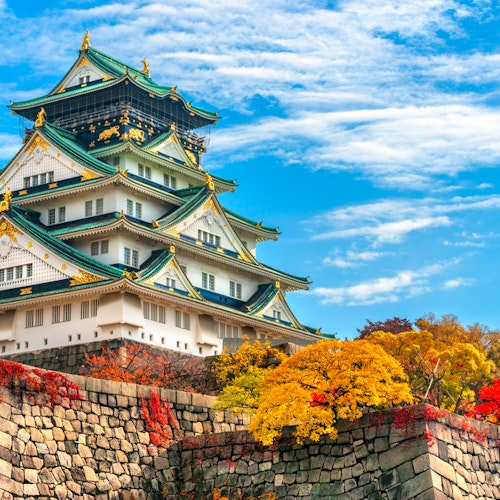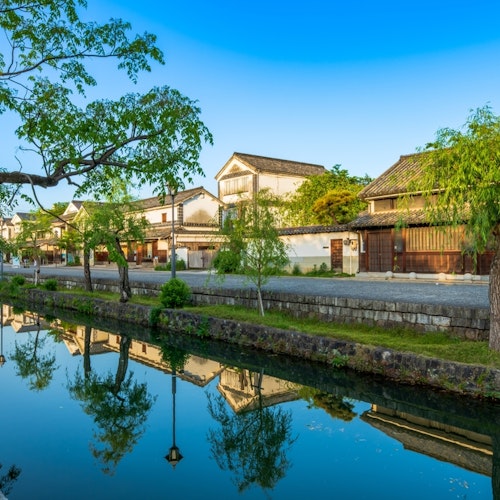
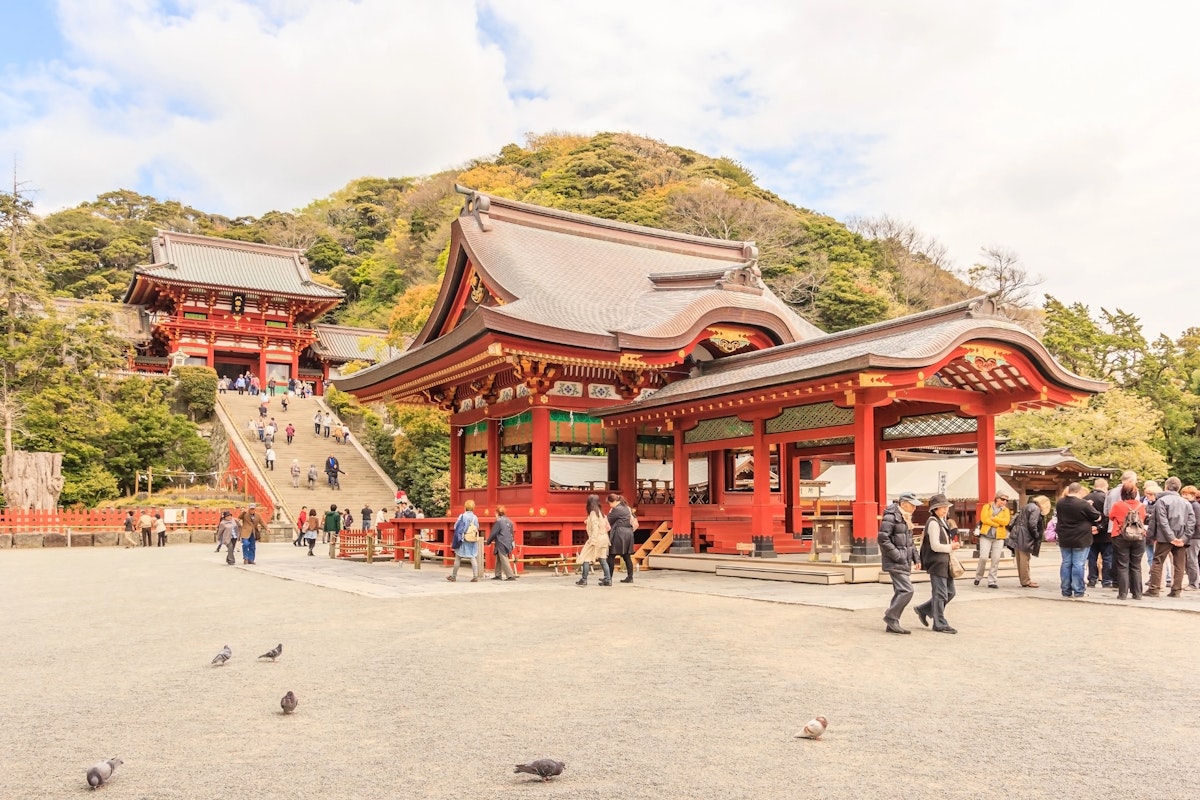
In the heart of Kamakura, Tsurugaoka Hachimangu Shrine (鶴岡 八幡宮) stands as a testament to Japan's rich history, spiritual traditions, and architectural brilliance. As one of the most important Shinto shrines, it is dedicated to Hachiman, the patron god of warriors, particularly revered by the Minamoto clan, who played a pivotal role in shaping the Kamakura shogunate.
With its serene shrine grounds, cultural festivals, and stunning seasonal landscapes, Tsurugaoka Hachimangu Shrine is a must-visit for travelers seeking to connect with Japan's past. Conveniently located just a short walk from JR Kamakura Station, this historical and spiritual landmark attracts over two million visitors annually.
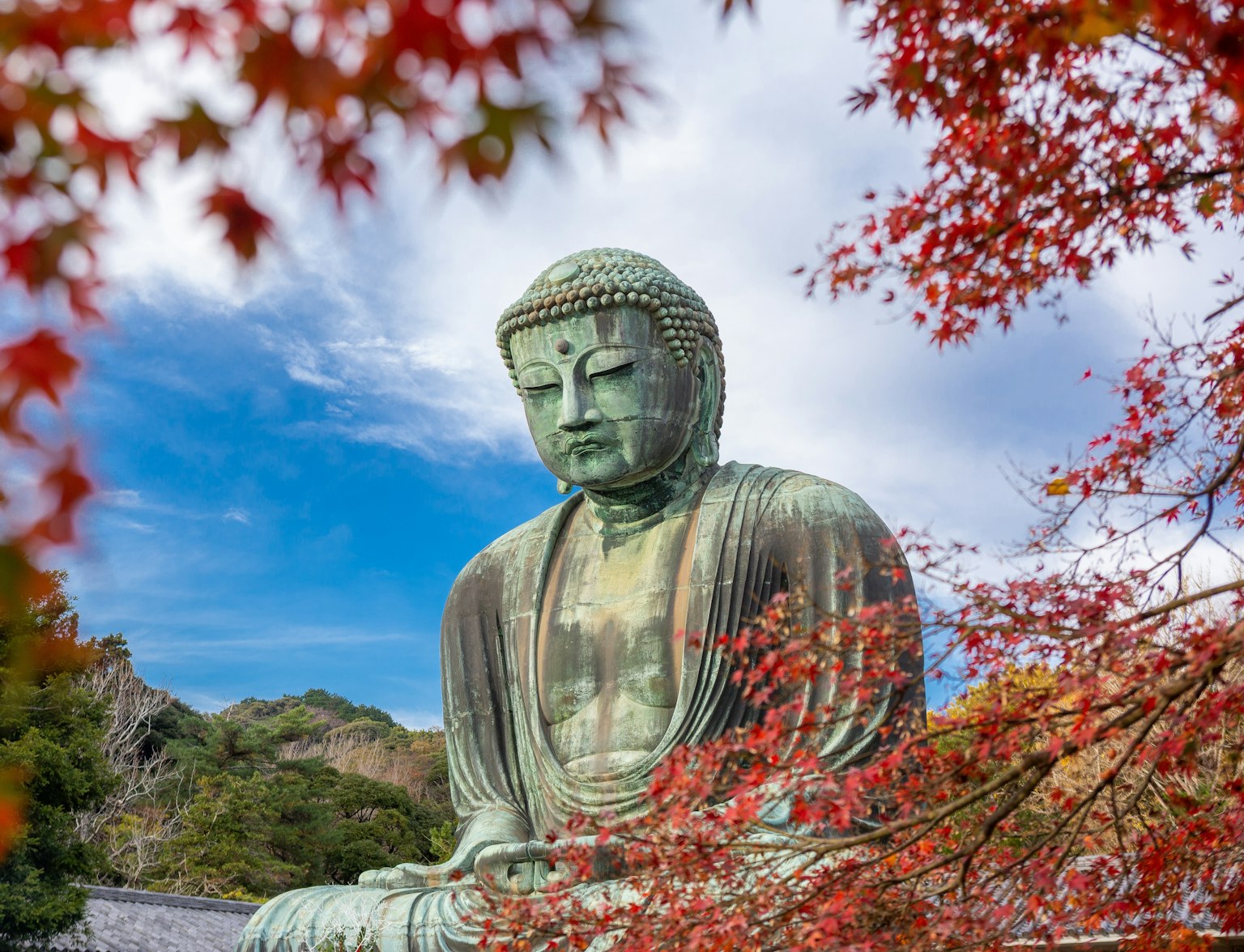
Experience the magic of the Great Buddha like never before!
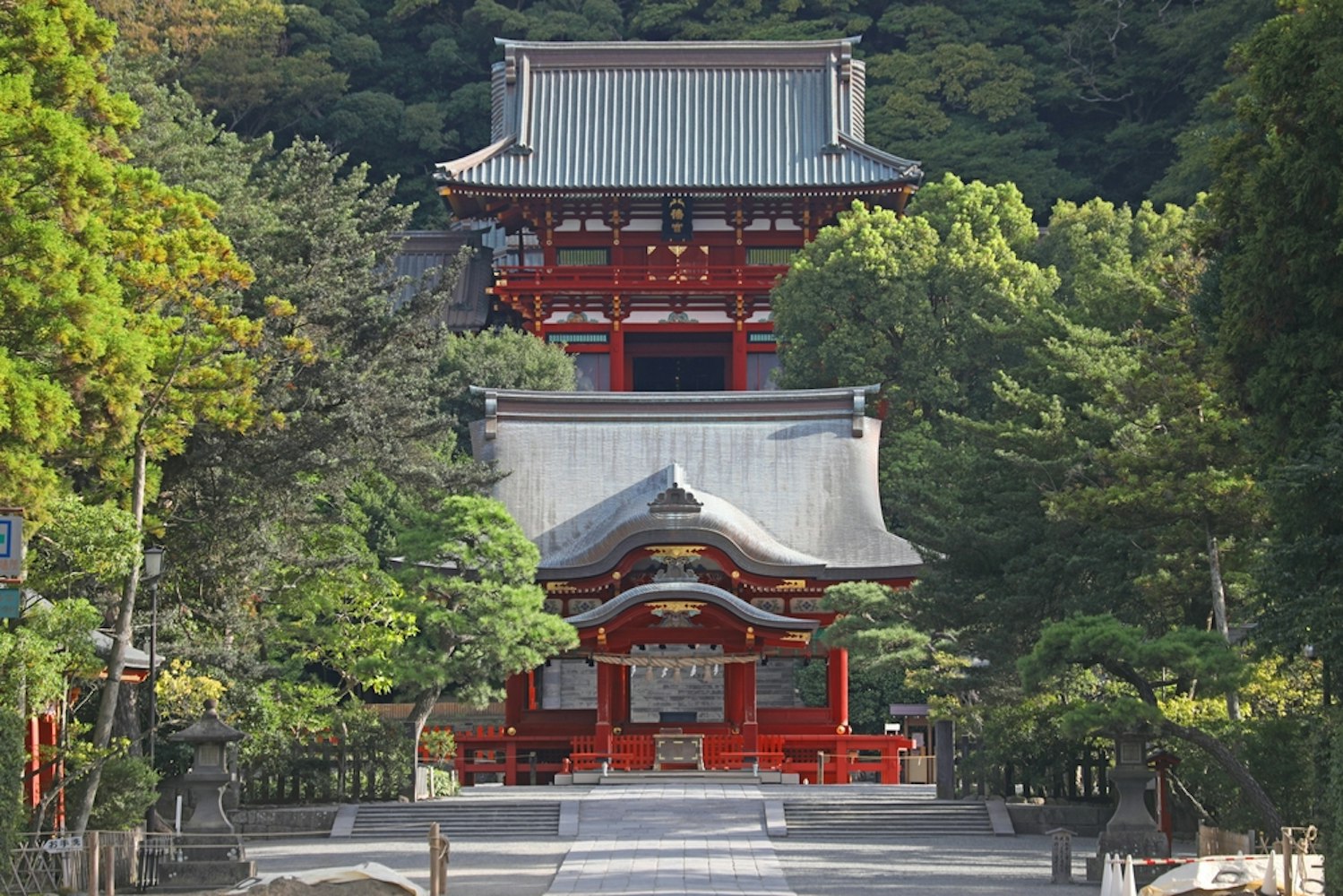
Established in 1063 by Minamoto Yoriyoshi, Tsurugaoka Hachimangu Shrine has witnessed the rise and fall of samurai rule. Its current location in the entire city center of Kamakura was established in 1180 by Minamoto no Yoritomo, the founder of the Kamakura shogunate.
Designed according to feng shui principles, the shrine symbolically protects the city, making it a cornerstone of Kamakura's urban planning during the Kamakura period. The shrine served as a religious hub and a political center, blending the practices of two religions—Shinto and Buddhism—that were standard during that era.
The complex, comprising the main shrine, sub-shrines, and the iconic wide stairway, embodies this fascinating fusion, making it one of the most popular shrines in Japan.
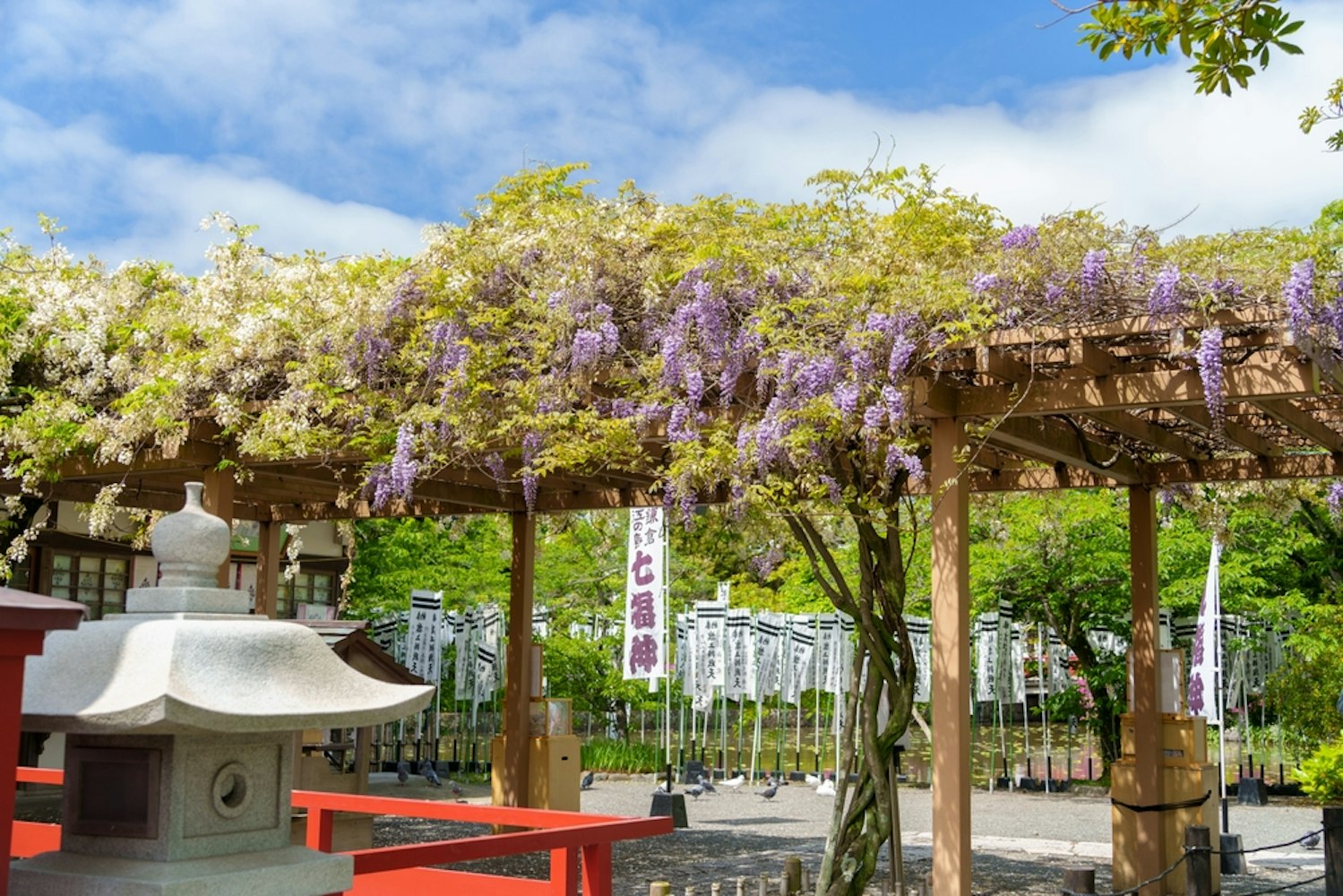
The shrine grounds are a treasure trove of historical and natural beauty. Upon entering, visitors are greeted by the majestic wide stairway leading to the main sanctuary.
Flanking the stairway are the genpei ponds—one dedicated to the Minamoto clan and the other to their rivals, the Taira clan. These two ponds serve as tranquil spots and symbolize the Minamoto's triumph over the Taira.
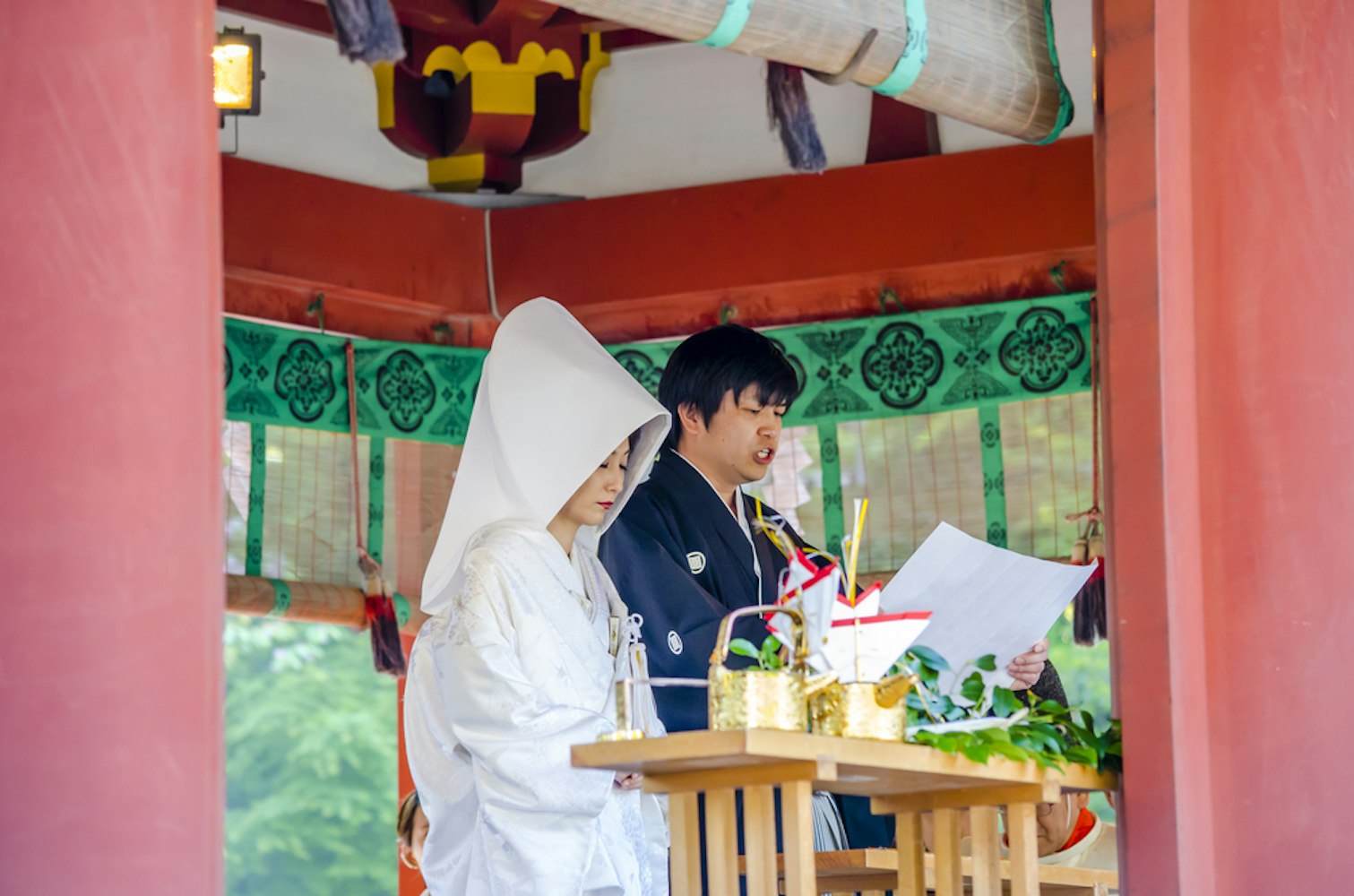
The Wakamiya Shrine, perched halfway up the grand stairway, is a vibrant hub of cultural and spiritual activity. It regularly hosts traditional performances, including sacred dances and rituals, offering visitors a glimpse into centuries-old Japanese customs.
Nearby, the maiden dancing stage, an elegant open pavilion, is a focal point for these events, particularly during festive celebrations. Here, graceful dance and music performances come to life, celebrating Japan's rich artistic heritage and captivating audiences with their beauty and symbolism.
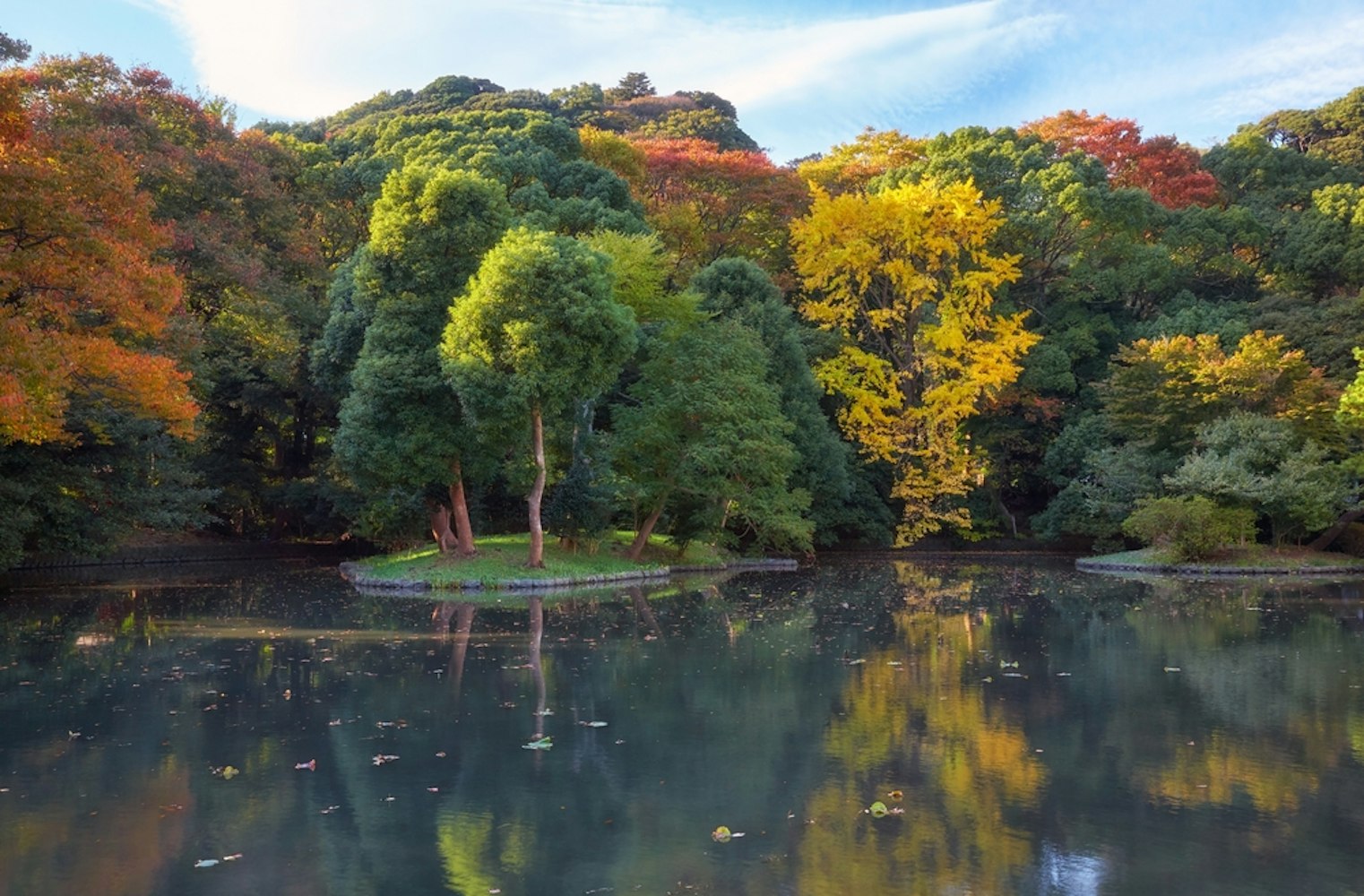
The Minamoto pond, situated halfway through the Tsurugaoka Hachimangu Shrine complex, is a captivating spot that draws visitors year-round. The pond is surrounded by delicate cherry blossoms in spring, creating a picturesque scene of pink and white petals reflected in the tranquil water.
By mid-April and again in mid-September, the vibrant peony garden bursts into bloom, adding splashes of vivid color to the serene surroundings. This harmonious blend of seasonal beauty makes the shrine a haven for nature enthusiasts and photographers, offering a new reason to visit each changing season.
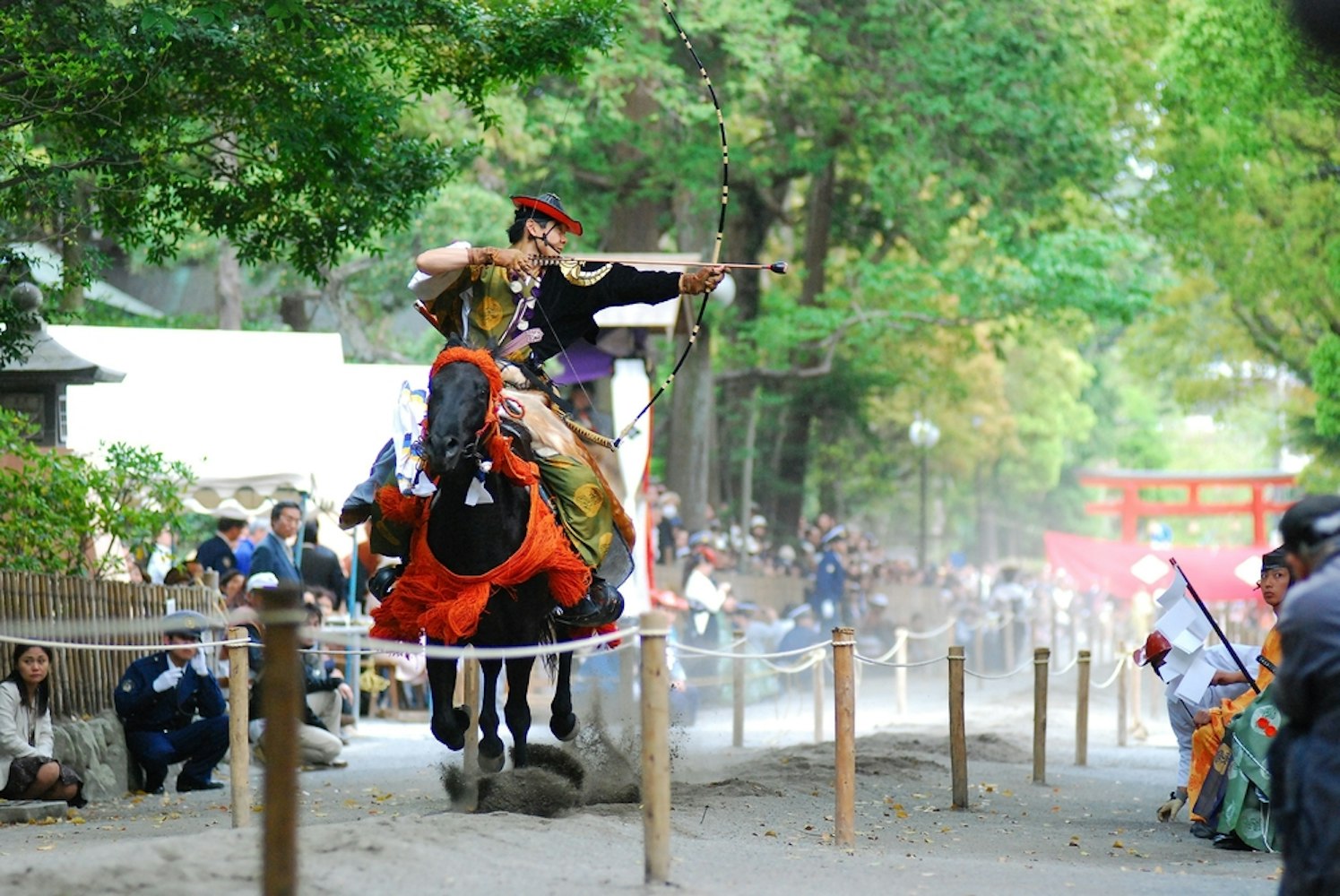
One of the shrine's most spectacular events is the Japanese archery festival, known as "Yabusame," held on horseback in mid-September. This centuries-old tradition features skilled archers dressed in samurai attire galloping on horseback and shooting arrows at stationary targets with remarkable precision.
The event highlights the martial prowess and discipline of the samurai and serves as a sacred offering to the gods, praying for peace and prosperity. Yabusame combines history, spirituality, and breathtaking action, drawing large crowds each year and making it a must-see cultural spectacle at Tsurugaoka Hachimangu Shrine.
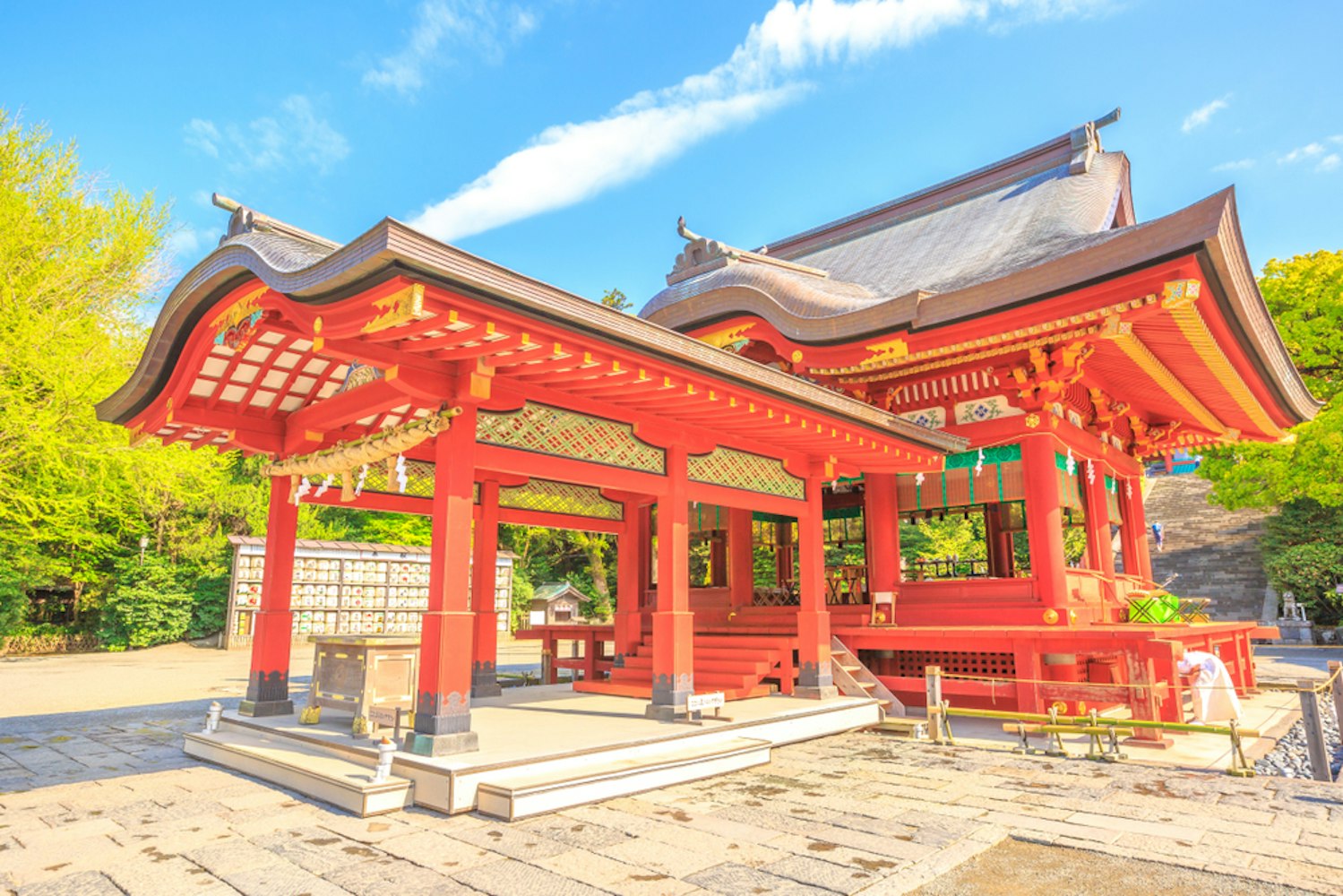
A small museum on the grounds of Tsurugaoka Hachimangu Shrine offers visitors a chance to delve into Japan's storied past. It showcases various treasures, including weapons, scrolls, and ceremonial artifacts from the Kamakura period, each telling a unique story of the era's culture and governance.
These national treasures illuminate the shrine's role as a spiritual hub and underscore the influential legacy of the Minamoto family, founders of the Kamakura shogunate. Visitors profoundly appreciate Kamakura's historical significance as Japan's former political and cultural epicenter through these exhibits.
Location: Just a minute's walk from JR Kamakura Station, accessible via the JR Yokosuka Line.
Convenient Access: The shrine is centrally located, making it easy for travelers exploring Kamakura to visit.
Scenic Stroll: Walk along Kamakura's main street, which has charming coffee shops, unique souvenir stores, and local eateries.
Enjoy the Journey: The vibrant atmosphere of the approach enhances the experience, blending cultural discovery with leisurely exploration.
For history buffs, spiritual seekers, and lovers of Japanese culture, a visit to Tsurugaoka Hachimangu Shrine is an unforgettable experience. Its unique blend of Shinto traditions, historical significance tied to the Minamoto clan, and stunning landscapes make it a jewel in Kamakura's crown.
Whether you marvel at the main hall, admire the cherry trees, or enjoy the vibrancy of various events, the shrine offers a glimpse into Japan's soul. As you stand at the top of the broad stairway, looking out over Kamakura, you'll feel the harmonious blend of history, spirituality, and natural beauty.
This timeless allure keeps visitors returning year after year.
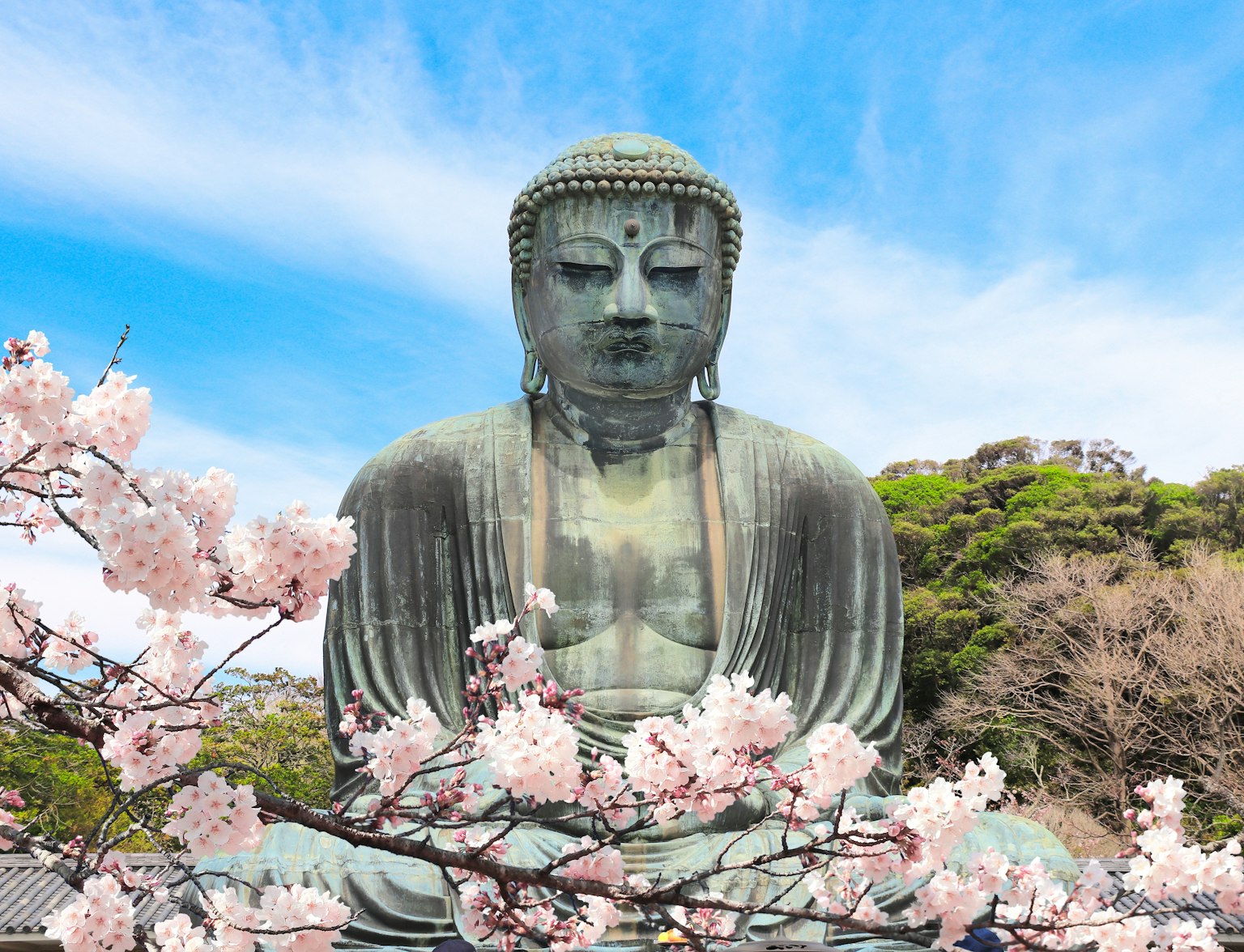
Explore the historical city of Kamakura on a full-day private tour.

